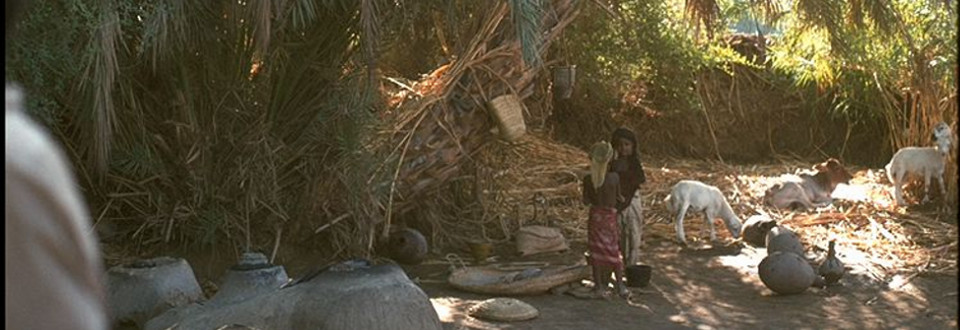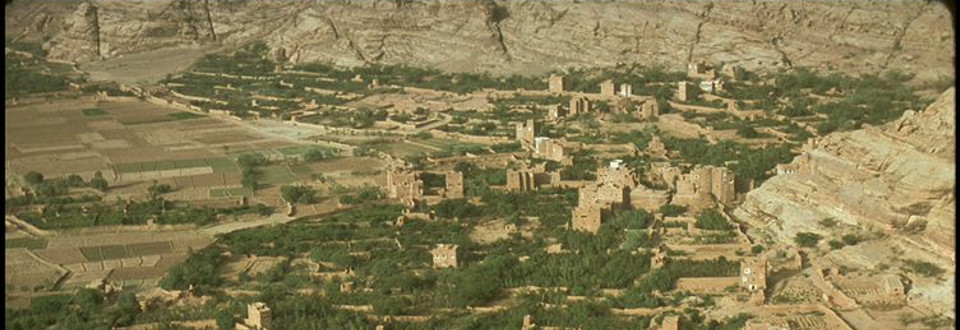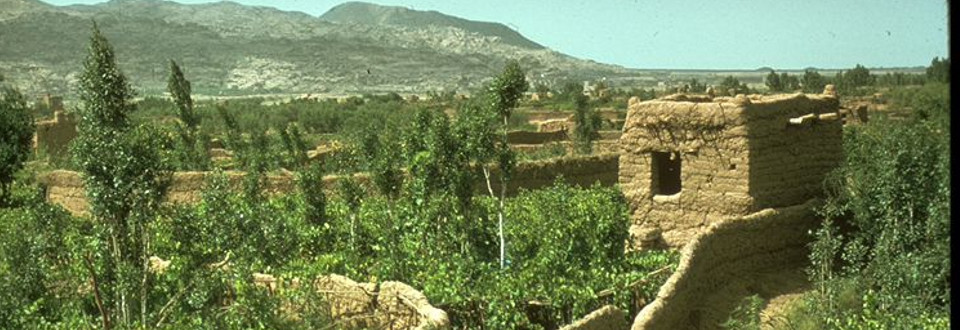
وادي مور، اليمن، 1974 ، موندي

وادي مور، اليمن، 1974 ، موندي

وادي ضهر، اليمن، 1974 ، موندي

وادي ضهر، اليمن، 1974 ، موندي

تعتمد تونس، كغيرها من البلدان الكثيرة في الجنوب، على بلدان الشمال لتأمين الغذاء إلى سكانها الذين يناهز عددهم الـ12 مليون نسمة. وبصورة إجمالية، تستورد تونس أكثر من %50 من حاجاتها الغذائية في حين أنها لا تعاني نقصًا في الأراضي الزراعية الخصبة ولا في الموارد المائية القابلة للاستغلال أو في الكفاءات والدرايات المحلية في مجال الإنتاج الزراعي.
يهدف هذا المقال إلى إظهار كيف تمٌ إرساء التبعية الغذائية بصورة طوعية وتطويرها (إنتاجها) منذ بداية العهد الاستعماري (نهاية القرن التاسع عشر).
إقرأ المزيد >أجرت "ثمار" مقابلة مع الدكتور علي القادري لمناقشة أعماله حول الإمبريالية، نظرية القيمة، الرأسمالية ودور الهدر في مراكمة رأس المال خصوصا في سياق غرب آسيا وشمال أفريقيا. البروفيسور علي القادري أستاذٌ محاضر في جماعة سنغافورة الوطنية وأستاذ زائر في كلية لندن للاقتصاد. يركّز في أبحاثه مؤخرا على الاقتصاد السياسي للتنمية. يطرح القادري نظريته حول الهدر ودور الحروب والتدمير كآليات للإنتاج ومراكمة رأس المال. له عدة مؤلفات منها: "تفكيك الاشتراكيّة العربيّة" (2016)، الحزام الرادع: قانون واحد يحكم التنمية في شرق آسيا والعالم العربي (2018).
إقرأ المزيد >لايزال مصر مجتمع "ريفي" هذا ما تقوله لنا احدث الإحصاءات الرسمية. فوفقًا لبيانات تعداد عام 2017 للسكان فإن عدد سكان الريف وصل إلى نحو 54.75 مليون شخص وهم يمثلون نحو 57.8% من جملة السكان في مصر. ومن الملاحظ زيادة نسبة السكان في الريف مقارنة باخر تعداد عام للسكان اجري عام 2006 والتي كانت تمثل 57% من جملة السكان ورغم ان مفهوم الريف والحضر مفهوم اداري غير مرتبط بحجم السكان او النشاط الاقتصادي لكن لاتزال الزراعة تمثل أحد مصادر الدخل غالبية السكان بالريف.
إقرأ المزيد >
اتضحت الى حد ما طبيعة التناقض الرئيسي في الاقتصاد الزراعي في الهند عقب استقلالها وتحررها من الحكم الاستعماري في العام 1947. تمثل التناقض الرئيسي آن ذاك بالتناقض بين عامة الفلاحين الزراعيين والعمال من جهة، والاقلية من ملاك الأرض والتجار والدائنين الذين احتكروا السيطرة على الأراضي والرساميل واستغلوا الفلاحين عن طريق الإيجار والفوائد وهوامش الارباح التجارية الباهظة من جهة آخرى. في الواقع كان هذا التناقض قائما من قبل، وكان جزءً من التناقض العام بين الشعب الهندي ككل وبين الامبريالية؛ لكنه سرعان ما برز إلى الواجهة خلال الفترة اللاحقة للاستقلال، وأصبح العنصر المُحدد لأجندة النضال الديمقراطي القائمة.
لم يعد التناقض الرئيسي على ما كان عليه سابقا، أي التناقض بين الشعب الهندي ككل وبين الامبريالية ووكلائها من حلفاء محليين. ففي حين لم تكن الامبريالية قد زالت بعد، بل كانت في حالة إنحسار في سياق حالة الفوضي التي سادت ما بعد الحرب التي عمت العالم المتقدم، اتاح الانعتاق من الاستعمار لبلدان العالم الثالث، مثل الهند، محاولة الانفصال عن التقسيم الدولي السابق للعمل الذي بحسبه كانت هذه الااقتصادات مفتوحة ومحررة بالكامل وموجهة لصالح نمو المركز لا للنمو الوطني. وباتت بعد الاستقلال قادرة على حماية اقتصادياتها وعلى قيام الدولة بالتدخل لصالح التنمية الوطنية، وساعدهم بذلك وجود المعسكر الاشتراكي. وفي الوقت الذي سكت فيه المحررون القدامى، لم يكن المحررون الجدد قد ظهروا بعد.
إقرأ المزيد >في سبعينيات وثمانينيات القرن العشرين، قيّمت مجموعة من المثقفين الأفارقة الجوانب السلبية والإيجابية لمشروع باندونغ في التنمية الوطنية. وكان المفكّر الاقتصادي المصري سمير أمين سباقًا إلى طرح بديل لمحاولة اندماج ناجحة في المنظومة العالمية. وقد صاغ أمين، باستلهام تجربة التحالف بين العمال والفلاحين في الصين الماوية، مفهوم فك الارتباط بوصفه استراتيجية تنمية شعبية تعتمد على إخضاع التدفقات المالية والتجارة الخارجية لقانون قيمة يقرره الشعب.
مثّل فك الارتباط ردًا سياسيًا واقتصاديًا على الضغوط الاجتماعية والاقتصادية التي تمارسها الرأسمالية على التنمية في الأطراف. لكنه لم يكن الرد الوحيد الذي جاء بعد أن اتضحت حدود تصنيع بدائل الاستيراد والاعتماد على المحاصيل السلعية والتحديث الزراعي القائم على خرافةطريق الفلاح المتوسط نحو التقدم. وبالتوازي مع تكريس أمين لطريق التنمية الماوي، بدأ مهندسون زراعيون من أنصار الفلاحين وعلماء البيئة والأحياء ومختصون في علم أصول النبات (Ethnobotany) وآخرون في البلدان المستعمرة سابقاً، بتأسيس حركتهم المضادة لمشروع باندونغ في التحديث الزراعي. لكن استراتيجيتهم التنموية لم ترتكز على الفلاحين من الناحية السياسية أو الاجتماعية، بل انصب اهتمامهم على الأساس الأنثروبولوجي والتكنولوجي والبيئي للزراعة "التقليدية" لهؤلاء الفلاحين. وأعدّوا من هذا المنطلق مجموعة مبادئ شكلت أساسًا لما أصبح الآن خطة عالمية لحداثة بديلة: الزراعة البيئية.
إقرأ المزيد >